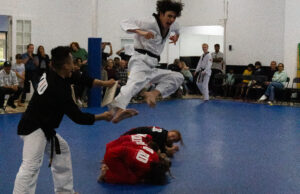Cursive remains significant to students
In today’s technology-dependent world, people are too busy typing and tapping away instead of writing on old-fashioned pen and paper. At this rate, it seems as though humans will barely have to write with pen and paper ever again. While electronic devices have added an element of convenience to the writing process, putting pen to paper has benefits that typing cannot replace. Researchers have found ties between writing by hand and everything from language skills to memory to critical thinking.
For children, cursive handwriting requires more advanced hand movements than print handwriting. Students need to learn how much force they should apply to the pencil and paper, as well as the process of motor planning to form the letters in a fluid, constant motion from left to right. This promotes enhancing fine motor skills, which is crucial for elementary school students to develop at their young age.
In an academic study called “The Pen is Mightier than the Keyboard,” researchers Pam Mueller and Daniel Oppenheimer found that students that write out their notes perform better on conceptual questions than students who take notes on laptops. Mueller and Oppenheimer also concluded that students who type their notes tend to transcribe lectures and only scratch the surface of the material they need to know. Students who take notes by hand digest the content and reframe it in their own words which increases their retention and comprehension.
Additionally, cursive handwriting has a historical and cultural significance that should not be ignored, as it has been used in history for centuries. Historical documents like the Constitution are written in cursive. In schools, children are asked to read pictures of various historical documents and some children are unable to decipher the text. When children are not taught to write in cursive and are not exposed to it, they cannot read it, either. This is harmful to dealing with historical documents and memorabilia when students cannot interpret the documents.
Moreover, cursive is still relevant in formal settings such as signing legal documents and mailing wedding invitations. When it comes to signing the bottom of a document or letter, cursive adds to one’s personal expression and touch. If one were to write their signature in normal print, it lacks authenticity and can be easily forged. Cursive has the added benefit of being both artistic and highly customizable. Developing a cursive hand to be used in a personal signature carries through in a unique form of writing that others can identify and associate with a particular individual. One can write cursive words in a super tight string, or loosely spread out. Students are not carbon copies, and education should include tools that encourage the individual personality.


